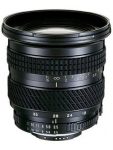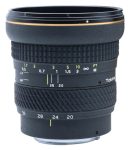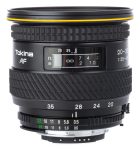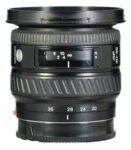Sigma 21-35mm F/3.5-4.2 ZEN
Wide-angle zoom lens • Film era • Discontinued
Specification
| Optical design: | |
| 35mm full frame | |
| 21mm - 35mm [1.7X zoom ratio] | |
| F/3.5 @ 21mm - F/4.2 @ 35mm | |
| 12 elements in 12 groups | |
| Floating element system | |
| Canon EF [44mm] | |
| Minolta/Sony A [44.5mm] | |
| Nikon F [46.5mm] | |
| Sigma SA [44mm] | |
| 91.7° @ 21mm - 63.4° @ 35mm (35mm full frame) | |
| On Canon EOS APS-C [1.59x] cameras: | |
35mm equivalent focal length range: | 33.4mm - 55.7mm (in terms of field of view) |
35mm equivalent speed range: | F/5.6 @ 21mm - F/6.7 @ 35mm (in terms of depth of field) |
Diagonal angle of view: | 65.9° @ 21mm - 42.5° @ 35mm |
| On Sony DSLR-A/SLT-A APS-C [1.53x] cameras: | |
35mm equivalent focal length range: | 32.1mm - 53.6mm (in terms of field of view) |
35mm equivalent speed range: | F/5.4 @ 21mm - F/6.4 @ 35mm (in terms of depth of field) |
Diagonal angle of view: | 67.9° @ 21mm - 44° @ 35mm |
| On Nikon D APS-C [1.53x] cameras: | |
35mm equivalent focal length range: | 32.1mm - 53.6mm (in terms of field of view) |
35mm equivalent speed range: | F/5.4 @ 21mm - F/6.4 @ 35mm (in terms of depth of field) |
Diagonal angle of view: | 67.9° @ 21mm - 44° @ 35mm |
| On Sigma SD APS-C [1.74x] cameras: | |
35mm equivalent focal length range: | 36.5mm - 60.9mm (in terms of field of view) |
35mm equivalent speed range: | F/6.1 @ 21mm - F/7.3 @ 35mm (in terms of depth of field) |
Diagonal angle of view: | 61.2° @ 21mm - 39.1° @ 35mm |
| Diaphragm mechanism: | |
Diaphragm type: | Automatic |
Aperture control: | None; the aperture is controlled from the camera (Canon EF, Minolta/Sony A, Sigma SA) |
| Aperture ring (Manual settings + Auto Exposure setting) (Nikon F) | |
| 6 (six) | |
| Zooming: | |
Zoom mechanism: | Manual |
Zoom control: | Zoom ring |
Zoom type: | Rotary |
Zooming method: | Internal zooming |
| Focusing: | |
| 0.50m | |
| 1:12.5 @ 35mm | |
Focusing modes: | Autofocus (AF), Manual focus (M) |
Autofocus motor: | Micromotor (Canon EF, Sigma SA) |
| In-camera motor (Minolta/Sony A, Nikon F) | |
Manual focus control: | Focusing ring |
Focus mode selector: | AF - M (Canon EF, Sigma SA) |
| None; focusing mode is set from the camera (Minolta/Sony A, Nikon F) | |
Manual focus override in autofocus mode: | - |
| Optical Stabilizer (OS): | |
| - | |
| Physical characteristics: | |
| 480g (Nikon F) | |
| ⌀87.5×104.5mm (Nikon F) | |
| Accessories: | |
| Screw-type 77mm | |
| Built-in petal-shaped | |
| <No data> |
Source of data
- Manufacturer's technical data.
Manufacturer description
As the focal length decreases to wide angle and ultra wide angle, even a 1mm variation of focal length has a significant effect on the image. Sigma's 21-35mm ultra wide-angle zoom lens boasts a maximum wide angle of 21mm. It effectively covers the equivalent of four wide-angle lenses: 21mm, 24mm, 28mm and 35mm. In particular the impressive perspective change from the 21mm to the 24mm range is only obtainable from ultra wide-angle lenses. While widening practically to the limit of wide-angle lenses, Sigma succeeded in thoroughly eliminating distortion. The use of a floating focus mechanism alleviates close-range astigmatism and flare obtaining optical characteristics approaching single-focus lenses. It is fitted with a fixed "perfect" hood.
Notes
- The autofocus will not be available with Nikon D40, D40X, D60, D3000-D3500, D5000-D5600 digital SLR cameras.
- Sigma had to reverse engineer the communication protocol of the Canon EF mount to produce a version of this lens for Canon EOS 35mm film SLR cameras. As a consequence, this lens may not work properly with Canon EOS cameras (both film and digital) due to compatibility issues.
Frequently asked questions
What does the Sigma lens designation "ZEN" mean?
It means that the lens has a ZEN finish. ZEN is an acronym for Zeitgeist ("the spirit of the times"), Enhancement, and Nonglare. This nonreflective urethane resin finish was introduced around 1989 and replaced the old-style, painted satin-black finish. Sigma claimed it to be hard, strong, antichemical, nonslip, antiglare, and scratch-resistant, however, it actually had a tendency to peel off and become sticky as it aged.
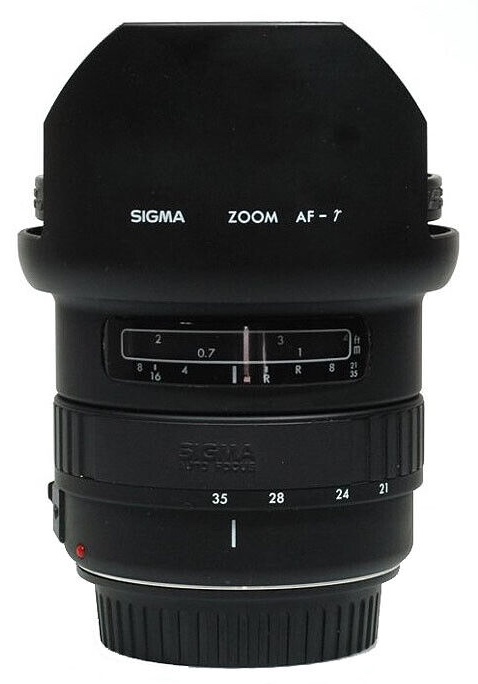
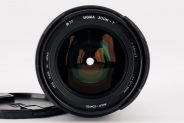
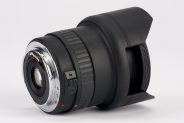
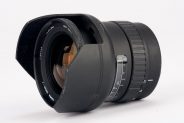
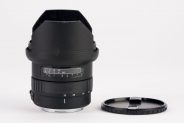
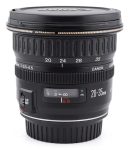
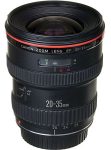

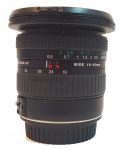
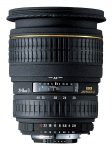
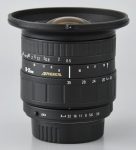
![Tamron SP AF 20-40mm F/2.7-3.5 Aspherical [IF] 166D](https://lens-db.com/wp-content/uploads/2012/07/4820611743_4b1cc836ef_b-133x150.jpg)
![Tamron SP AF 20-40mm F/2.7-3.5 Aspherical [IF] 266D](https://lens-db.com/wp-content/uploads/2012/03/s-l16004-115-118x150.jpg)

